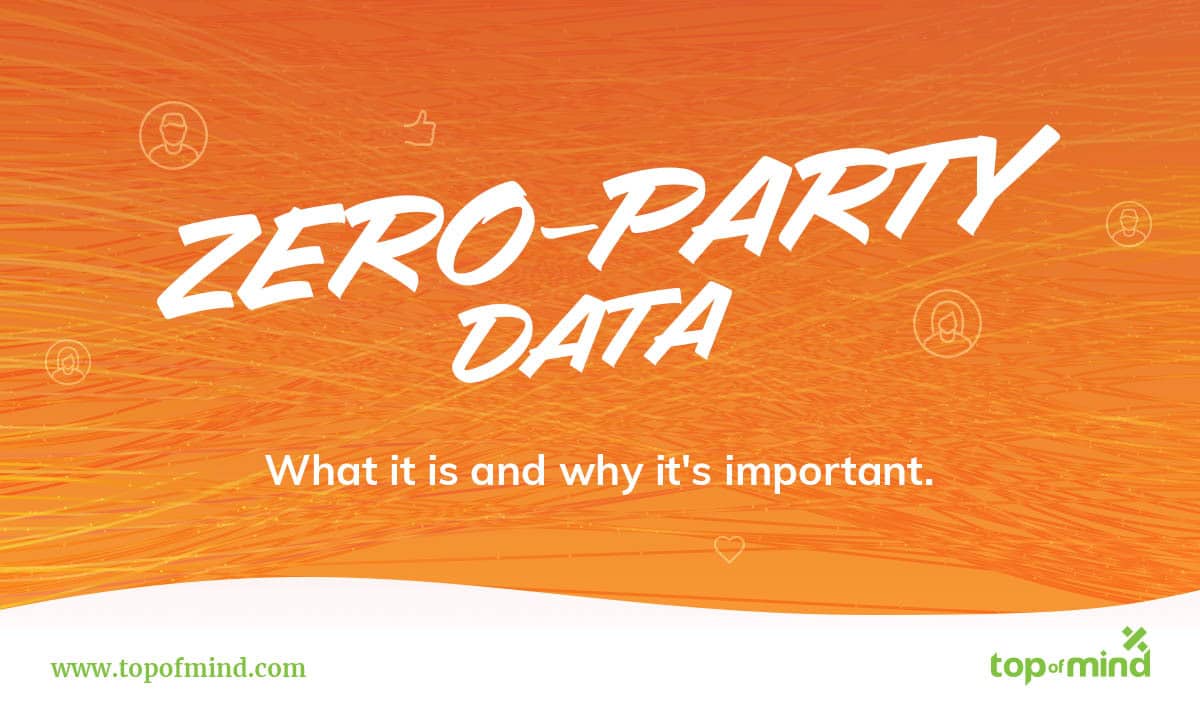As GDPR and CCPA legislation becomes commonplace and third-party cookie support expires at the end of this year, the data collection landscape is changing quickly.
Mortgage marketers are starting to rethink how they capture data to meet the requirements for creating a personalized homebuyer experience while complying with data privacy requirements.
So how do companies capture intent and measure audience behavior in this new era? The key is creating an experience for customers to proactively share meaningful data while balancing privacy, compliance, personalization, and trust.
Bring on marketing’s newest buzzword, zero-party data. A major marketing trend gaining traction in 2021, zero-party data collection can become helpful for mortgage marketers seeking ways to compliantly build an audience, locate new customers and track consumer behavior.
What is zero-party data?
According to Destination CRM, Zero-party data is personal information that customers intentionally and proactively share with companies.
GET STARTED TODAY
Give Surefire a Try!
The best way to find out what we offer is to try it out yourself. We’re confident that you’ll like what you see.
In its purest use case, data becomes zero-party when information is willingly given to a company by a customer with the expectation that the consumer will receive a tailored experience in return.
Before jumping into strategies on collecting zero-party data and how it relates to building a solid mortgage pipeline through tactics such as lead generation, it’s crucial to understand how zero-party data compares to other data sets.
How is zero-party different from other data classes?
As most in mortgage marketing know, there are three common types of data. Each dataset serves a purpose for helping companies better understand their audience and what is driving conversion, uncover new opportunities, and drive customer experience.
First-party data: First-party data is information a company directly collects from its own internal channels and resources. Customer information can come from many different sources, including point-of-sale, customer service interactions, lead forms, live chat, social media, etc.
Data collected from interactions with customers is first-party data. Because it is captured across many different sources, it is important to funnel the data into one central place and not keep the data sitting in various first-party data pools.
To understand the difference between first-party data and zero-party data, A recent article on CMO.com defines the difference as “First-party data is data a brand collects to understand a broader audience as a whole, where zero-party data is simply asking consumers what they want from a brand, and using it specifically for that person, rather than inferring it for a broader population.”
A powerful mortgage CRM like Surefire can help unify first-party data for marketers. It can help them capture the data from across the organization, better understand customer behavior, and automatically send them marketing content based on the data help lenders drive personalized experiences for future loan shoppers.
Second-party data: Second-party data is another company’s first-party data collected by a separate company or sold to another organization. This data can be used to optimize internal marketing campaigns and help improve customer experience. Many times, second-party data is sold to another business with a similar clientele.
“Second-party data is another company’s first-party data that’s packaged and sold. There’s no other party involved: one company collects data, then sells it directly to another company. It’s the same type of data as first-party data, but the source is different. Second-party data is valuable because it can help you get more information about your customers. If you’re a business that’s just getting started, you might not have much data to use. Second-party data can help you build a customer base, fill gaps, and maintain GDPR compliance via data collection auditing” Source: Exponea.com
Because consumers allow companies to use their zero-party data for specific purposes or value exchanges, zero-party data should never be sold. This difference is what separates zero-party and second-party data.
Third-party data: Marketers looking for larger datasets typically turn to third-party data providers. Third-party data lists are purchased from outside sources to help complete audience profiles and drive personalization. Third-party data can fuel scalability for brands and is frequently utilized inside ad exchanges to cause targeting capabilities via programmatic advertising.
Third-party data can come with limitations. First, the data is not exclusive like first-party data and not like zero-party data where a consumer willfully gives the data. With these other data classes, you know where the data is coming from and how it was collected. Third-party serves to scale and help with targeting, but the data quality can be an issue at times.
How can mortgage marketers collect and utilize zero-party data?
There are several ways to capture zero-party data that can be meaningful for both borrowers and lenders. Let’s take a look at some of the strategies mortgage companies can use to help drive personalization, positive brand experience, and customer loyalty.
Micro-Experiences
Many brands are turning portions of their websites into micro-experience pages for inbound site visitors. For example, when a borrower comes to the site, they are asked a series of questions with the goal of creating a customized experience. Customization and personalization are key marketing trends.
Surveys
Lenders can conduct onsite surveys or follow-up surveys (e.g., “How was your experience”) to help capture zero-party data in exchange for the satisfaction in knowing that the input will help the business be more effective in serving customer needs now and in the future.
Social Media
Interacting with prospective borrowers across sites social media platforms as Facebook, Linkedin and Instragam can be a great way to gain a deeper understanding of consumer behavior. Driving your social audience to custom landing pages and mobile-friendly micro-sites is an excellent strategy for capturing zero-party data.
All three marketing tactics are an essential part of driving an omnichannel experience for lenders and borrowers.
Final Thoughts
As consumer privacy takes center stage this year, many companies are starting to see the value in zero-party data. When requested sparingly and applied strategically, zero-party data can vastly improve how you communicate with customers. As Forrester says: “Zero-party data is extremely valuable and will improve the effectiveness of your firm’s personalization efforts.”
Importantly, too, zero-party data isn’t a zero-sum game. Companies and customers both benefit. Forrester further notes: “Ultimately, zero-party data can reduce marketing waste for a brand and improve the lives of its customers – a win-win situation for everyone involved.”
A mortgage marketing system like Surefire can provide all the necessary tools to capturing consumer data while keeping your company in compliance. Contact us today to learn more.

Rick Webster
Vice President, Client Strategy
A seasoned digital marketing executive and mortgage veteran, Rick has spent over 20 years leading successful teams and guiding hundreds of marketers at large global brands, mortgage companies, and advertising agencies. With a background in marketing automation and financial technology, Rick helps marketing teams drive results with the latest strategies.
More Articles From Rick Webster
MORTGAGE MARKETING UNIVERSITY
Free Ebook
Get instant access to tried-and-true mortgage marketing strategies and guides with Mortgage Marketing University.
SEE YOURSELF IN SUREFIRE
Custom Look Book
See how Surefire effortlessly develops content tailored to your brand. Sign up for a free look book today.
SUREFIRE CRM
Get the Demo
You have what it takes to be a top mortgage lender and Surefire has what it takes to get you there. Learn How!


